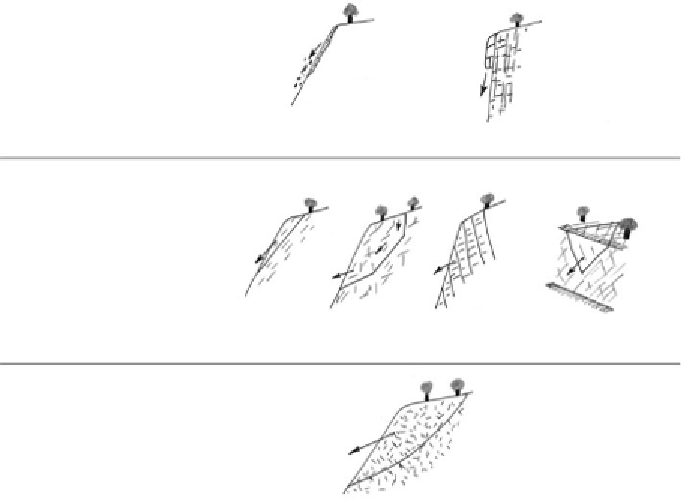Geology Reference
In-Depth Information
SHALLOW
May be controlled by
discontinuity pattern or
material deterioration. Often
triggered by rainfall,
vegetation jacking or
vibration
rock fall
ravelling
STRUCTURAL
wedge
Failure geometry follows
pattern of geological
discontinuities
planar
topple
complex
DEEP-SEATED
NON-STRUCTURAL
Options for assessing rock mass strength
include:
Rock mass is weakened by discontinuities
even though they do not fully define the
failure geometry
- Rock Mass Rating RMR
- GSI (Hoek-Brown)
- Hack SSPC (Hack, 1998)
of rock, perhaps dipping steeply back into the slope. Large complex
failures can involve a number of adverse sets of discontinuities together
with some breaking through intact, perhaps weathered rock, allowing
the full mechanism to develop.
Deep seated, non-structurally controlled: the rock can be considered
an interlocking mass of rock blocks without adverse fabric such as
bedding, schistosity or systematic joints.
Steep rock slopes are sources of rockfalls, which can be a major risk,
especially where adjacent to a busy road or railway. All rock slope
surfaces deteriorate with time (Nicholson
et al
., 2000). Rock material
weathers, vegetation grows and opens up joints and blocks get under-
mined by erosion (
Figure 3.58).
Even small blocks can cause accidents.
On large lengths of highway through a mountainous region, there will
be a need to identify where the risk is greatest so that the risks can be
mitigated cost-effectively
(Box 6-4)
. This can be done by using some
Rock Mass Rating appraisal system together with software capable of
predictingwhere falling rockmight end up, but it is often just a matter of
engineering judgement taking account of the history of rockfalls. In such
an assessment, it should be remembered that relatively minor rockfalls

